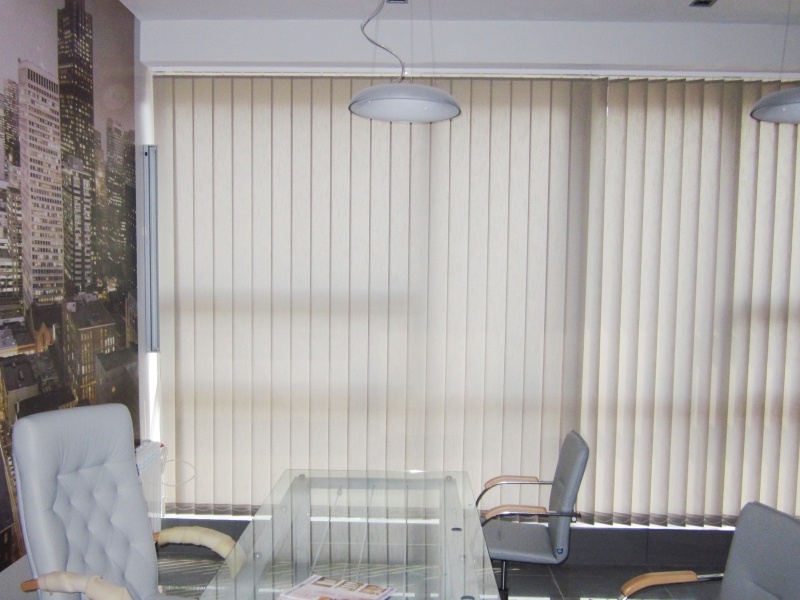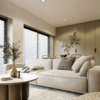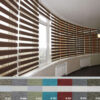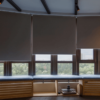
So, you need new blinds for your home? Looking to update or upgrade? Great, there are plenty of different types and styles available. Wait, there are too many, and it’s a little overwhelming? Is there that much of a difference, and is it even necessary? Fret no more; we’ve got you covered and will answer all your questions.
With so much choice available these days, it’s essential to take your time and get some expert advice before making a decision. It can have very different effects on your home regarding atmosphere, style and functionality, whether looking at wooden, fabric or aluminium blinds, vertical, Venetian or rollers.
Understanding the different options available in terms of design and material choices will go a long way to helping you choose the best window treatments or shutters that will suit your home and lifestyle requirements best. So, let’s dive into our guide to help you decide about buying blinds and shades.
Understanding Blinds & Shades
Blinds and shades are window coverings commonly used in home decor for functional and aesthetic purposes.
Typically, blinds are made of slats or vanes that can be adjusted to control the light entering a room. They come in various materials such as wood, metal, fabric or plastic. The slats can often be tilted to different angles or raised/lowered to regulate privacy and sunlight.
On the other hand, shades are usually a single piece of material that can be raised or lowered to cover the entire window. They come in different styles, like roller, Roman, and cellular shades. Shades are known for providing a clean and streamlined look to windows.
Their primary purposes in home decor and privacy are intertwined. Firstly, they offer control over natural light, allowing homeowners to adjust the ambiance of a room. This is crucial for creating a comfortable and visually appealing atmosphere. Additionally, blinds and shades provide privacy by obstructing the view from outside, preventing curious glances into your living space.
Blinds and shades have gained popularity in modern interior design due to their versatility and sleek designs. They come in a wide array of colours, patterns, and materials, allowing homeowners to customize their window treatments to complement the overall aesthetic of their living spaces. The minimalist and functional nature of blinds and shades aligns well with the contemporary design trends prioritizing simplicity and practicality.
Types of Blinds and Shades
With this many different types of blinds and shades out there, let’s delve into their world and discuss some of the most popular styles and their best uses, shall we?
1. Vertical Blinds
Vertical blinds are slats that hang down and are often made of fabric, vinyl, or wood. They can be rotated to control light and provide privacy.
Use Cases: They are ideal for large windows or sliding glass doors as they run along a track on the top. They offer easy light control and can create an elongated appearance for windows.
2. Horizontal Blinds
Venetian Blinds
Venetian blinds have horizontal slats made of various materials, such as wood, aluminium, or PVC, connected by cords that allow tilting.
Use Cases: They are versatile and suitable for almost any window, offering precise control over light and privacy.
Mini Blinds
Similar to Venetian blinds, mini blinds have narrower slats.
Use Cases: Great for smaller windows and spaces with a more subtle window treatment.
3. Roller Blinds
Roller blinds are made up of a single piece of fabric that can be rolled up or down around a cylinder. It can be made of various materials, including sheer or blackout fabrics.
Use Cases: This type of blind is suitable for a clean, modern look. Sheer roller blinds are great for diffusing light, while blackout options are perfect for bedrooms.
4. Roman Shades
Soft fabric panels that fold when raised and lie flat when lowered are the main characteristics of Roman shades. They add a touch of elegance to windows.
Use Cases: Ideal for living rooms or dining areas where a more formal and decorative window treatment is desired.
5. Cellular Shades (Honeycomb)
As the name implies, cellular shades comprise cells that trap air, providing insulation. They come in single, double, or triple-cell designs.
Use Cases: Cellular shades are energy-efficient and suitable for all rooms. Double or triple-cell shades are excellent for insulation against heat or cold.
6. Pleated Shades
Similar to cellular shades, pleated shades have an accordion-like appearance.
Use Cases: Pleated shades are versatile and can suit various room styles. They provide a streamlined look and are easy to operate.
7. Zebra Blinds
As their name suggests, zebra blinds are also known as sheer or layered blinds. They consist of alternating transparent and opaque stripes that can be aligned for varying levels of light control.
Use Cases: Stylish and contemporary, zebra blinds are suitable for spaces where you want to combine privacy with filtered light.
8. Motorized Blinds
Motorized blinds are, not unsurprisingly, blinds that can be operated electronically, often via remote control or smart home systems.
Use Cases: They are convenient for hard-to-reach windows or those who want to integrate window treatments with smart home technology.
Also Read:
- How to Choose the Right Motorized Blinds for Your Home
- 7 Best Window Blinds for Maximizing Natural Light In Your Home
Materials and Fabrics
While not quite as many as they have styles, blinds can come in various materials, so let’s open the blinds on these materials!
Wood
- Pros: Elegant and timeless, wood blinds add warmth to a space. They are durable and can be stained or painted to match various decor styles.
- Cons: Susceptible to moisture, which can lead to warping or cracking. Regular maintenance is essential to prevent damage.
Aluminium
- Pros: Sleek and modern, aluminium blinds are lightweight and moisture-resistant. They are also budget-friendly.
- Cons: Prone to bending and may be noisy when moved. Limited colour options compared to other materials.
Fabric (Cotton, Polyester, Linen)
- Pros: Soft and versatile, fabric blinds and shades offer various colours and patterns. They can add texture and a cozy feel to a room.
- Cons: Depending on the fabric, they may be susceptible to fading or damage from sunlight. Regular cleaning may be necessary to maintain their appearance.
Vinyl
- Pros: Affordable and moisture-resistant, vinyl blinds are easy to clean and maintain. They come in various colours and textures.
- Cons: Prone to cracking in extreme temperatures. It may not have the same aesthetic appeal as other materials.
Bamboo
- Pros: Eco-friendly and natural, bamboo blinds provide a unique and organic look. They are lightweight and can complement various decor styles.
- Cons: Susceptible to fading and may not be as durable as other materials. Regular dusting and cleaning are necessary.
Faux Wood
- Pros: Mimics the appearance of natural wood but is more affordable and moisture-resistant. Durable and suitable for humid environments.
- Cons: It may lack the authenticity of natural wood. Limited customization options compared to real wood blinds.
Style Considerations
Next, let’s delve into the nuances of choosing blinds and shades to create a visually appealing space!
Colour Options
The colour of blinds or shades can significantly influence the overall mood of a room. Lighter colours create a sense of openness and airiness, while darker tints can add warmth and coziness. Choosing a colour that complements or contrasts the existing decor can tie the room together.
Patterns and Textures
Patterns and textures add visual interest to window treatments. They can be used to create focal points or enhance the overall design theme of a room. Subtle patterns or textured fabrics can add depth, while bolder patterns can make a statement. Consider the existing patterns in the room to ensure a harmonious look.
Opacity (Light-Filtering vs. Blackout)
The opacity level affects the amount of natural light that enters a room and the degree of privacy. Light-filtering options allow a soft, diffused light, creating a bright and inviting atmosphere. Blackout options are ideal for bedrooms or media rooms where complete darkness is desired. The choice can also impact energy efficiency by controlling heat and cold.
Cordless or Corded Options
The choice between cordless and corded options is about functionality and aesthetics. Cordless options provide a clean and streamlined look, contributing to a modern and minimalist decor. They are also safer, especially in homes with children or pets. Corded options may offer a more traditional appearance and are still popular for certain design styles.
Also Read: Blinds vs. Shades: A Homeowner’s Dilemma – Which is Right for You?
Sizing and Measuring
Measuring windows accurately is crucial to ensuring a perfect fit for blinds and shades. Here’s a step-by-step guide along with some tips:
Step 1: Gather Supplies
You’ll need a steel measuring tape, pencil, notepad, or smartphone to record measurements.
Step 2: Choose Inside or Outside Mount
Decide whether you want your blinds or shades mounted inside the window frame or outside on the wall.
Step 3: Inside Mount Measurements
Width
- Measure the width at the window’s top, middle, and bottom.
- Record the narrowest measurement to ensure a proper fit.
Height
- Measure the height on the window’s left, center, and right.
- Record the longest measurement.
Step 4: Outside Mount Measurements
Width
- Measure the width where you want the blinds or shades to cover.
- Add extra width for overlap and to ensure light control.
Height
- Measure the height from where you want the top of the blinds or shades to start to where you want them to end.
- Add extra height for overlap and to ensure coverage.
Step 5: Check for Obstructions
Be aware of any obstructions, such as window handles or locks that may affect the fit. Consider the clearance needed for smooth operation.
Tips for Ensuring a Perfect Fit
Double-check Measurements
Measure twice to ensure accuracy. Even a tiny error can result in ill-fitting blinds or shades.
Consider Mounting Depth
For inside mounts, check the depth of your window. Make sure there’s enough space for the blinds or shades to be mounted without hitting any obstructions.
Account for Window Frame Variations
If your window frame is not perfectly square, consider slightly adjusting your measurements to accommodate variations.
Account for Bracket Size
If using brackets for installation, consider their size. Add the bracket’s width to your measurements for accurate sizing.
Use the Right Measuring Unit
Ensure your measurements are in the same unit (inches or centimetres) to avoid confusion.
Consult Manufacturer Guidelines
Some manufacturers provide specific guidelines for measuring their blinds or shades. Check these guidelines for accuracy.
Professional Measurement Services
Call Sky Blinds for professional measurement services to ensure a perfect fit if in doubt.
Installation and Maintenance
Let’s shed some light on the installation process for various blinds and shades!
Vertical Blinds
- Attach the brackets to the wall or window frame.
- Slide the headrail of the blinds into the brackets.
- Connect the control wand or chain, if applicable.
- Test the blinds to ensure smooth operation.
Horizontal Blinds (e.g., Venetian, Mini-blinds)
- Install brackets either inside the window frame or on the wall.
- Hang the blinds in the brackets.
- Connect any control cords or wands.
- Adjust the length if necessary.
Roller Blinds
- Mount the brackets either inside or outside the window frame.
- Insert the roller into the brackets.
- Attach the fabric to the roller.
- Test the blinds to ensure proper rolling.
Roman Shades
- Install the brackets either inside or outside the window frame.
- Hang the shade on the brackets.
- Attach any cords or chains.
- Test the shade to ensure smooth operation.
Cellular Shades (Honeycomb)
- Attach the brackets either inside or outside the window frame.
- Slide the headrail into the brackets.
- Secure any cord tension devices.
- Test the shades for proper movement.
Zebra Blinds
- Install the brackets either inside or outside the window frame.
- Hang the blinds on the brackets.
- Connect any control chains or wands.
- Adjust the alignment of the stripes for desired light control.
Motorized Blinds
- Follow manufacturer instructions for installing the motor and brackets.
- Connect the blinds to the motor.
- Program the motorized system according to the instructions.
- Test the blinds to ensure they respond to commands.
Are you looking for quality blinds and shades or need Blind repairs in Toronto for your existing window treatments? Check out Sky Blinds for a wide range of options and professional services. We also offer a blinds repair service to maintain your window treatments.
Maintenance Tips
- Dust blinds and shades regularly to prevent the buildup of dirt and allergens.
- Address stains promptly with a gentle cleaner suitable for the specific material.
- Keep cords untangled and ensure they are not frayed or damaged.
- Periodically test the operation of blinds and shades to identify any issues early.
- Check for any signs of damage, such as bent slats or frayed edges, and address them promptly.
- Consider professional maintenance or repairs if you notice significant issues.
Also Read: Best Blinds For Basement Windows
Energy Efficiency
Now, let’s explore how blinds and shades can enhance energy efficiency within your home.
Insulation and Temperature Control
Cellular Shades (Honeycomb)
The unique honeycomb design creates air pockets that act as insulators. Double or triple-cell shades provide enhanced insulation. They effectively prevent heat loss in winter and minimize heat gain in summer, thus contributing to energy efficiency.
Roman Shades and Draperies
Heavier fabric materials provide additional insulation. During colder months, these window treatments can help retain heat; in warmer months, they can block out sunlight and reduce cooling costs.
Wood Blinds
Wood is a natural insulator and provides a layer of insulation, helping to regulate indoor temperatures by reducing heat transfer through windows.
Roller Shades
Depending on the material, roller shades can provide varying degrees of insulation. Certain roller shade materials can reflect sunlight, preventing heat from entering the room during hot weather.
Material Impact on Energy Efficiency
aluminium Blinds
While aluminium blinds are lightweight and easy to clean, they are not as effective in providing insulation. They may not be the best choice for extreme temperatures.
Bamboo and Woven Wood Shades
Natural materials like bamboo provide some insulation. However, their impact may be less than thicker, more structured materials.
Faux Wood Blinds
Faux wood blinds, made of materials like PVC, offer moisture resistance and some insulation. They are suitable for environments with varying temperatures.
Solar Shades
Specifically designed to control glare and heat gain, solar shades effectively reduce solar heat gain while maintaining visibility.
Reflective Surfaces
Metal or Reflective Roller Shades
Roller shades with metallic or reflective surfaces can reflect sunlight, reducing the amount of heat entering the room.
Zebra Blinds
Zebra blinds with alternating sheer and opaque stripes allow for customized light control and can reflect or absorb sunlight based on their position.
Dual Purpose Blinds
Day/Night Cellular ShadesThese shades have both light-filtering and blackout fabrics, providing flexibility for different times of the day and seasons.
Budget and Cost Considerations
Finally, let’s put the spotlight on budget considerations for blinds and shades!
Cost Ranges
Vertical Blinds
- $50 to $200 per set, depending on material and brand.
Horizontal Blinds (e.g., Venetian, Mini-blinds)
- $20 to $100 per blind, depending on material and size.
Roller Blinds
- $30 to $150 per roller blind, depending on material and features.
Roman Shades
- $50 to $300 per shade, depending on fabric and style.
Cellular Shades (Honeycomb)
- $60 to $300 per shade, depending on the number of cells and features.
Zebra Blinds
- $40 to $200 per set, depending on size and brand.
Motorized Blinds
- $100 to $500 per motorized blind, depending on brand and features.
Tips on Budgeting
Set a Budget
Determine how much you are willing to spend on window treatments for each room. Having a budget helps narrow down options.
Prioritize Rooms
Decide which rooms require more expensive or specialized treatments. High-traffic areas or spaces where energy efficiency is crucial may justify a higher budget.
Consider Material Alternatives
Explore budget-friendly materials that mimic the look of more expensive options—for example, faux wood blinds instead of natural wood.
DIY Installation
Save on installation costs by opting for blinds or shades that are easy to install. Many products come with straightforward installation instructions.
Shop for Deals and Discounts
Keep an eye out for sales, discounts, and promotions from retailers. Many stores offer seasonal discounts on window treatments.
Mix and Match
You don’t have to use the same window treatment throughout the home. Mix and match different styles to meet your budget while maintaining aesthetics.
Consider Ready-Made Options
Ready-made blinds and shades are often more affordable than custom options. They come in standard sizes and can be trimmed or adjusted to fit your windows.
DIY Repairs
If budget constraints arise, consider DIY repairs for minor issues rather than replacing the entire window treatment.
Conclusion
With the sheer number of different types, styles and materials that blinds and shades can come in, it’s critical to understand the basics and the various benefits and drawbacks before making an informed decision. We hope our guide has helped you gain valuable insight into what you look for when shopping for blinds and shades.
If you’re unsure which type or style of blind may work best for you, don’t hesitate to seek professional advice. Sky Blinds’ professionals are here to help you navigate the ocean of blinds to reach your destination.
With over 20 years of experience in the industry, we have established ourselves as a trusted name in providing top-notch window coverings. Our commitment to excellence is evident in our HomeStars verification, assuring exceptional service and customer satisfaction every time. When you choose Sky Blinds, you choose quality craftsmanship, innovative design, and superior functionality.
Our Motorized Blinds are uniquely crafted to enhance your space while providing optimal light control and privacy. Whether you prefer a sleek modern look or a timeless classic style, our extensive range of customizable options ensures you’ll find the perfect fit for your home or office.
Schedule a free consultation with Sky Blinds today by calling 416-876-4759 or filling out our convenient online form.






